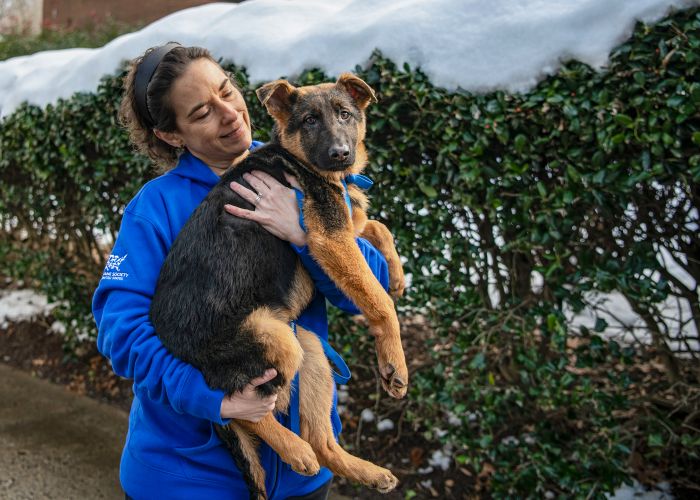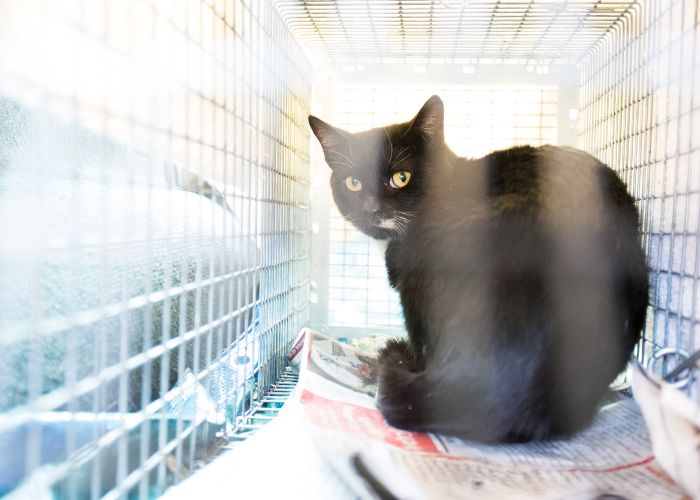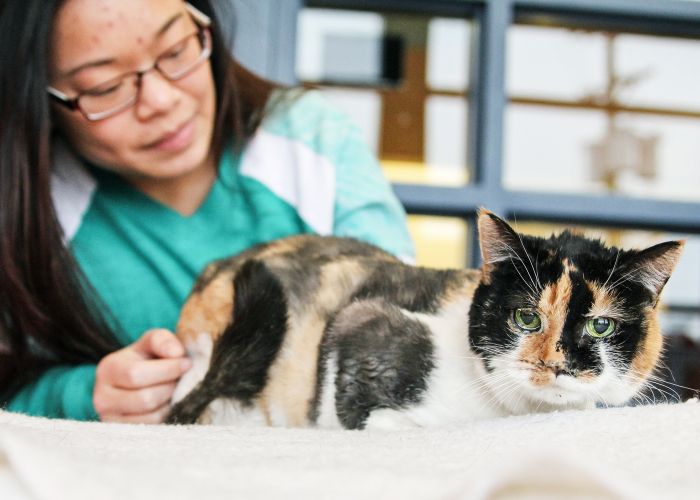Pointing the way with a pyramid
How cat advocates can allocate time and other resources for the biggest impact
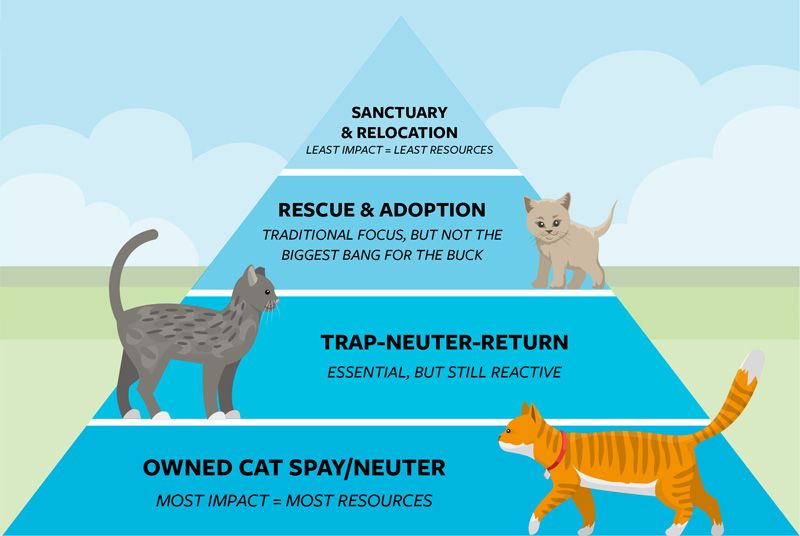
As cat protection advocates, we all want to help as many cats as possible, and we use multiple strategies to achieve that goal—from foster care and adoption to spay/neuter clinics and trap-neuter-return programs.
But are all our strategies equal, and should they all receive an equal share of our resources?
That was the question Stacy LeBaron was pondering earlier this year. At the time, LeBaron was also thinking about her own health. While researching various diets, she kept coming across food pyramids, the ubiquitous triangles that illustrate the proportions of different food groups in a meal plan.
That’s when a lightbulb went on: The cat world needed a simple way for visualizing how resources can “be best spent if our ultimate goal … is to reduce the free-roaming cat population in our communities,” LeBaron says. With the food pyramid as inspiration, she created the “community cat pyramid.”
In this diagram, program areas are akin to food groups, and the categories are broad. There are no exact percentages, but we all get the gist: more resources to the blocks at the base of the pyramid and fewer to those at the top.
In creating the pyramid, LeBaron drew from her 14 years as president of the Merrimack River Feline Rescue Society in Massachusetts, her experience mentoring cat groups across the country, and the over 200 interviews she’s conducted as the host of the Community Cats Podcast.
She recalls her early years at MRFRS in the ’90s, when the organization, which started as a TNR initiative, added an adoption center and a small spay/neuter voucher program for owned cats. MRFRS was on the forefront of TNR, leading to a decline in kitten intake, but the number of owned adult cats coming into area shelters wasn’t impacted until the organization aggressively targeted owned cats with spay/neuter initiatives.
“I firmly believe that the first thing any community needs is a low-cost spay/neuter program for cats,” she says, and such programs make up the foundation of her pyramid.
As LeBaron sees it, the more resources an organization allocates to programs higher on the pyramid, the more it is adopting a reactive, rather than a proactive, approach. While TNR and its cousin return-to-field are essential to stabilizing and reducing outdoor cat populations, community cats originate from lost or abandoned pet cats and their offspring. “TNR can be very labor intensive,” LeBaron writes in her blog. “It is a necessary program—but it is a reactive one that exists as a response to abandoned cats (the ones from the population at the base of the pyramid!) reproducing. … The more we get done at the base level, the fewer TNR/RTF cats we will need to do.”
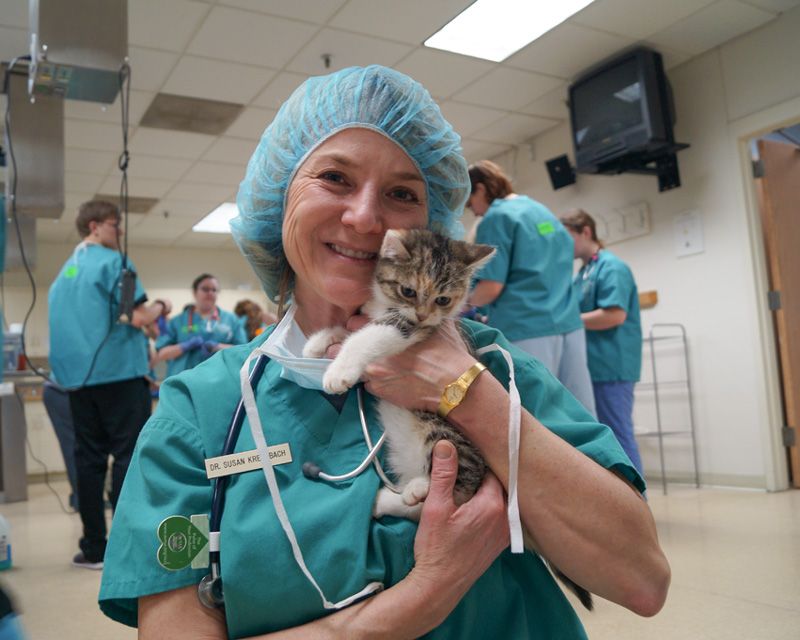
Shelter and rescue work, including adoption, make up a much smaller portion of the pyramid. Sanctuaries and relocation of community cats sit at the pyramid’s peak, commanding the smallest allocation of resources. In light of overall cat numbers, this makes sense: There are an estimated 70 million pet cats (with 7 million of those unaltered), 30-40 million community cats (only a small fraction of whom are altered) and 3-4 million cats cycling through our animal shelters annually.
For LeBaron, the pyramid is a vision of the future of cat welfare efforts. Right now, many communities focus resources on shelters and sanctuaries. Yet this is beginning to change, as communities shift from measuring success by shelter statistics to examining cat numbers for the entire community.
LeBaron encourages animal welfare groups to look at the pyramid in the context of the resources among all the organizations working in their area. You can be a TNR-only organization or focused on sheltering and adoption, she explains, but if so, you need to have another organization providing affordable spay/neuter for the public. Likewise, if your area has robust spay/neuter programs for owned cats but few programs targeting community felines, you would want to focus the bulk of your resources on TNR.
“We don’t all have to have the same mission or goals,” she adds, “but we need to look to the future and use our limited resources to help the most cats possible.”


